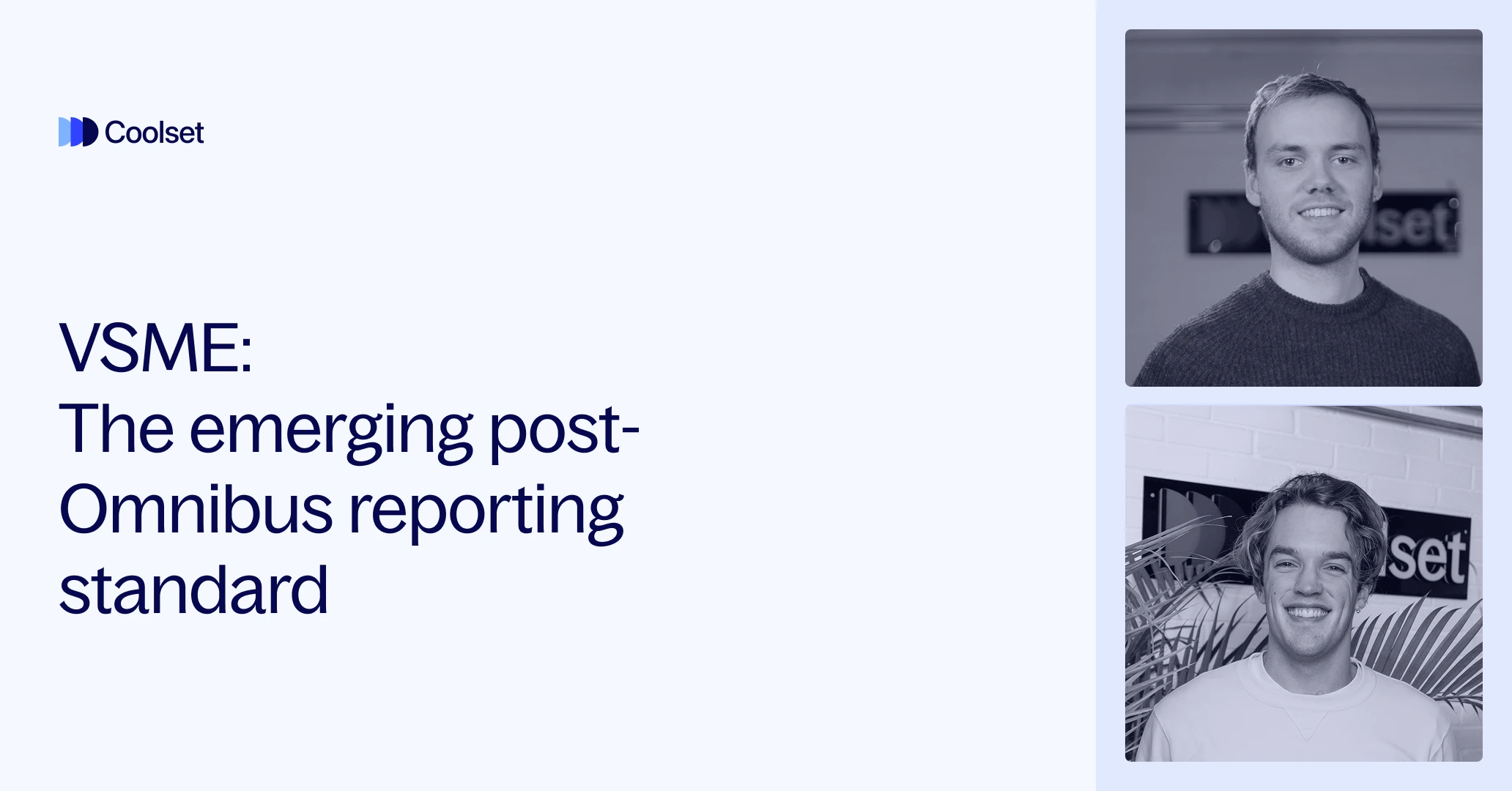With exclusive insights from 250+ companies, we break down how businesses are responding to the Omnibus Proposal, the growing role of voluntary reporting, and what it all means for your ESG strategy.
%20(1).png)
With the Omnibus proposal reshaping ESG reporting obligations, many companies that previously had to comply with the Corporate Sustainability Reporting Directive (CSRD) may no longer be required to report. But while mandatory requirements are loosening, the ESG reporting environment only grows in importance.
For businesses that want to continue structured ESG reporting without the complexity of full CSRD alignment, the VSME standard provides an efficient, proportional, and practical framework. It allows companies to measure, track, and communicate their sustainability performance — without unnecessary administrative burdens.
The VSME standard is designed to offer businesses a flexible, proportional approach to ESG reporting, with two levels of disclosure:
Basic Module: A streamlined ESG report that covers core sustainability metrics, such as energy use, workforce structure, wages, and anti-corruption compliance. This module is ideal for businesses looking for a manageable, lightweight ESG framework that meets basic stakeholder expectations without excessive complexity.
Comprehensive Module: A more detailed ESG report that builds on the Basic Module, adding disclosures on strategy, climate transition, human rights, and sector-specific data. This module is suited for companies that want to enhance transparency for banks, investors, and business partners.
The Basic Module is the starting point of VSME reporting. It provides a practical entry point for companies that are new to structured ESG reporting or seeking an alternative to CSRD compliance. Businesses must complete the Basic Module before opting for the Comprehensive Module, ensuring a structured, step-by-step approach to ESG reporting.
The Omnibus proposal gives companies more flexibility in how they approach ESG reporting. As a result, businesses now have three options:
Mandatory CSRD – Large companies with 1,000+ employees remain fully within CSRD’s scope and continue compliance.
Voluntary CSRD – Mid-sized companies committed to structured sustainability reporting choose to maintain CSRD alignment.
VSME Basic Module – Smaller organizations or those seeking a more practical, cost-effective ESG framework transition to the VSME.
For many businesses, the Basic Module is the ideal starting point. It mirrors key CSRD principles but removes unnecessary complexity — providing a credible, standardized approach to sustainability reporting.
The VSME Basic Module is the core part of a framework developed by EFRAG, designed to help businesses disclose their most essential sustainability information. It aligns with the European Sustainability Reporting Standards (ESRS) but is structured to be more concise, proportional, and business-friendly.
The Basic Module includes around 50 key ESG data points, covering:
It’s ideal for businesses that want to track their ESG progress, meet stakeholder expectations, and prepare for future regulatory shifts — without overloading internal resources.
Your company should consider adopting the Basic Module if:
{{custom-cta}}
The Basic Module is structured into four key ESG categories, each containing essential sustainability disclosures:

Start with readily available business records:
Tip: If exact data isn’t available, estimates are acceptable — the framework is designed to be realistic and flexible.
Decide how to present your Basic Module report:
Investors, banks, and large business partners still expect sustainability data, and having a structured ESG report helps you build trust, secure financing, and future-proof your organization. The VSME standard provides a manageable, actionable framework that allows businesses to transparently report on ESG performance without excessive complexity.
To guide this process, Coolset has launched a dedicated and modular VSME module: starting with the Basic framework and extending into Comprehensive. It’s designed to streamline reporting while setting you up with an end-to-end sustainability management platform for both current and future ESG needs.
Want to learn more? Find a time with our team.
Learn how the new VSME framework helps mid-sized companies navigate ESG reporting after CSRD rollbacks.

Note: This article is based on the original CSRD and ESRS. Following the release of the Omnibus proposal on February 26, some information may no longer be accurate. We are currently reviewing and updating this article to reflect the latest regulatory developments. In the meantime, we recommend reading our Omnibus deep-dive for up-to-date insights on reporting requirements.
Updated on March 24, 2025 - This article reflects the latest EU Omnibus regulatory changes and is accurate as of March 24, 2025. Its content has been reviewed to provide the most up-to-date guidance on ESG reporting in Europe.
Meet ESG reporting expectations and build stakeholder trust - without the complexity.
